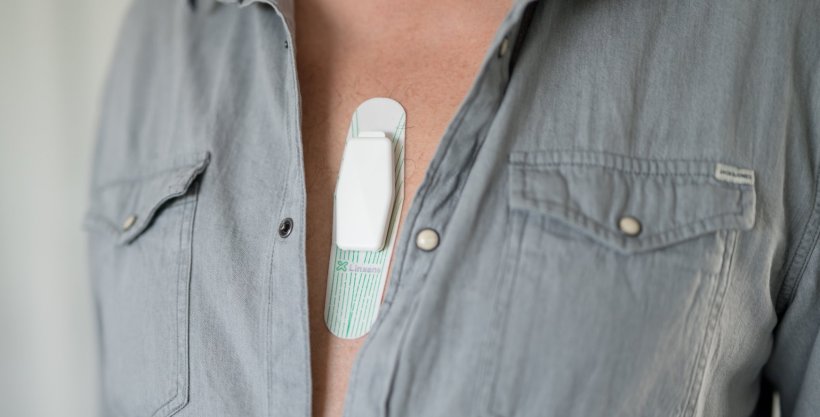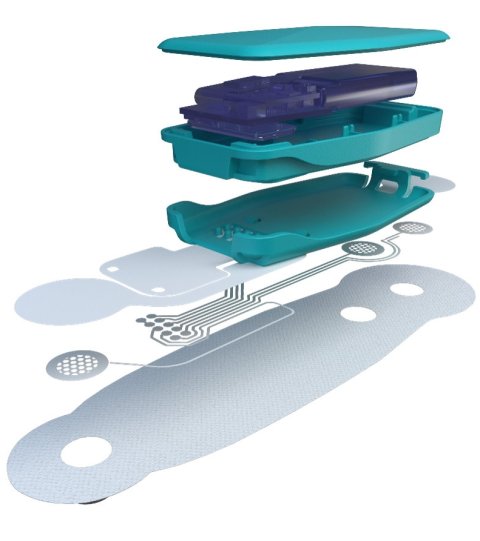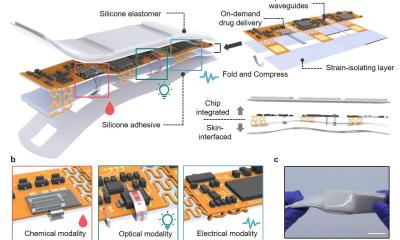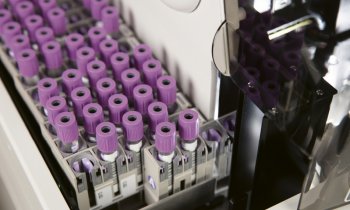
© Linxens
Opinion article • Wearable medical devices
Sweat analysis reveals a wealth of health information
Sweat is currently the focus of interest for many research labs around the world. Teams are working to develop sensors placed on the skin to analyze the composition of sweat. The goal is to avoid invasive, costly, and time-consuming blood tests.
By Alix Joseph, Global Sales & Marketing Director at Linxens Healthcare
The sweat analysis reduces costs and saves lives. With sweat analysis, biomarkers can be tracked that can be used to diagnose and monitor a wide variety of health elements, including cancer, diabetes, heart disease, and infectious diseases. In 2015, a study published in the journal Analytical & Bioanalytical Chemistry found that sweat analysis could be used to detect early-stage lung cancer with 80% accuracy. This is a significantly higher accuracy rate than that obtained with traditional methods of detecting lung cancer using chest X-rays and computed tomography (CT) scans. By analyzing sweat, doctors can detect diseases earlier and more effectively, as well as track the progression of diseases and the effectiveness of treatments. This can lead to earlier intervention, better patient care, and improved health outcomes.
Sweat, long considered a product of physical exertion, is now recognized as a valuable source of health information. Sweat composition analysis can provide information on a wide range of physiological and biochemical parameters, offering a non-invasive and convenient method to monitor health and detect potential health problems. The 2015 study has demonstrated the clinical utility of biomarker analysis in sweat for lung cancer screening with the ability to identify multiple biomarkers such as trisaccharide phosphate, suberic acid, tetrahexose, trihexose, nonanedioic acid or monoglyceride MG. It is important to note that sweat testing is a common test that has been performed on newborns at risk for Cystic Fibrosis (CF) for decades, measuring chloride concentration.
In addition, a recent study from 2022 has demonstrated the ability to collect sweat from the chest and back skin and identify biomarkers such as neurotransmitters (acetylcholine, epinephrine, serotonin, amino acids,...), amino acids, creatinine, steroid hormones, cortisol and cortisone. This combination of stress-related biomarkers demonstrated the possibility of assessing stress levels with remote monitoring devices that could assess biomarker concentrations directly at the user level when biosensors are available. The integration of sweat analysis into wearable medical devices offers then great potential for personalized healthcare and preventive medicine.
Here are some significant benefits of sweat analysis as estimated by healthcare professionals:
- Performing sweat analysis is a non-invasive procedure, unlike blood sampling, which is a more user-friendly and convenient approach to health monitoring.
- In certain industries, it lends itself to real-time and continuous monitoring through wearable sweat sensors that provide data on various health parameters, enabling proactive monitoring and timely intervention.
- Particularly for monitoring the elderly, sweat can provide insight into individual health status, enabling personalized treatment plans and lifestyle modifications.
- In a personalized health approach, it facilitates early disease detection, as sweat biomarkers can indicate the early signs of various health conditions, including diabetes, cardiovascular diseases, and certain cancers.
- Whether for the pharmaceutical industry to develop new drugs or to ensure medication adherence, sweat can be used for medication monitoring to ensure that patients are taking their prescribed medications correctly.
Such benefits are significant for many people and patients in many areas, not just the medical field:
- For patients with chronic conditions, sweat analysis enables for continuous monitoring of biomarkers associated with chronic conditions, helping individuals to effectively manage their conditions, prevent complications, and optimize medication adherence.
- It offers remote patient monitoring, enabling healthcare providers to remotely monitor the patients' health status, especially for those with limited mobility or living in remote areas.
- For clinical research and drug development, it provides accurate information on disease mechanisms, treatment efficacy, and drug absorption profiles.
- For occupational health and safety, it can monitor exposure to toxins, environmental contaminants, and workplace hazards. It provides an assessment of worker fatigue and hydration levels, ensuring workplace safety and productivity.
- For athletes and sports, sweat analysis provides real-time data on hydration, electrolyte balance, and nutrient levels, helping athletes optimize their performance and prevent dehydration. It can track exertion levels and muscle fatigue, enabling personalized training plans and recovery strategies.
- Finally, in the area of health and wellness, this analysis can be used to provide individuals with personalized information about their health and lifestyle habits. It can encourage preventive measures, such as dietary changes, exercise, and stress management, to maintain optimal health.

© Linxens
In fact, sweat analysis is not easy and there are many technological limitations to overcome in order to provide a reliable and practical device. Health challenges in the medical field are becoming increasingly important and require innovative and reliable solutions that are also cost-effective and minimally invasive. Among these challenges, sweat analysis is an expanding field that offers new perspectives for the diagnosis and monitoring of various pathologies. In this context, companies are offering high performance sweat analysis devices based on an effective sweat sampling system using specially designed biosensors for this type of analysis.
These biosensors consist of a detection element and a transducer. The detection element may contain immobilized enzymes, antibodies, or other biological recognition molecules that selectively interact with the target biomarker in sweat. This cutting-edge technology makes it possible to detect specific biomolecules such as ions, metabolites, and disease-specific biomarkers, thus offering promising prospects for early diagnosis and personalized patient monitoring. The development of a microfluidic sweat collector that can be integrated into a bracelet or adhesive skin-worn device is an unprecedented innovation for non-invasive sweat collection and sweat flow rate measurement, providing a complete solution for sweat analysis.
In summary, the health challenges in the medical field require innovative and reliable solutions. Sweat analysis is a promising area for patient diagnosis and monitoring.
26.07.2024











